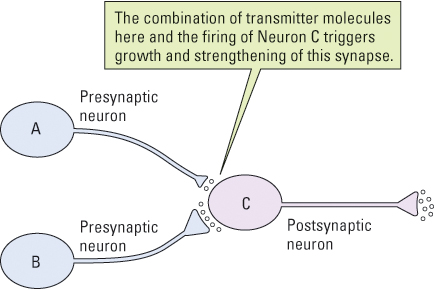
Figure 5.34 A Hebbian synapse The synapse between neuron A and neuron C is initially weak, so A is ineffective in stimulating C. However, if C fires (because of the firing of neuron B) immediately after neurotransmitter molecules have been released from A onto C, the synapse between A and C will grow stronger. If this happens a sufficient number of times, the synapse may become sufficiently strong that A will be able to trigger action in C even when B is inactive. This type of synapse is called Hebbian because its existence was first postulated by Donald Hebb. Recent research into the phenomenon of long-term potentiation confirms the existence of such synapses.